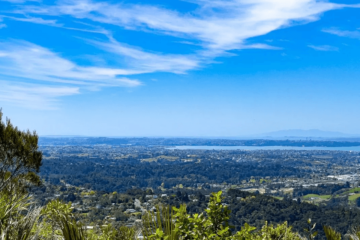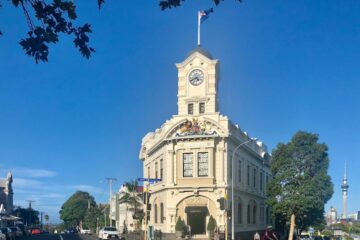Over the Tasman Sea – Planning a trip from New Zealand to Australia
Traveling between New Zealand and Australia is a common route for many adventurers seeking to explore the natural wonders, vibrant cities, and unique cultures of both countries. The proximity of the two nations makes it relatively easy to include both in your travel plans, and there are several factors to consider to ensure a smooth and enjoyable experience.
Air Travel
The distance between New Zealand and Australia is approximately 2,150 kilometers (about 1,336 miles) across the Tasman Sea. The most efficient way to travel between New Zealand and Australia is by air. Numerous airlines operate regular flights connecting major cities across the two countries. Depending on where you start and end your journey, you can expect a flight time of approximately 3 to 4 hours when it comes to direct flights. You may find a better deal with a layover, especially if you want to travel further in to Australia, but then you have to take in to account the additional flight time.
Direct flights are available from several New Zealand cities, including Auckland, Wellington, Christchurch, Queenstown, and Dunedin, to various Australian cities. Bear in mind that it’s advisable to book your flights well in advance to secure the best fares and to check for any travel deals or packages that might be available.
Is There an Australia to New Zealand Ferry?
Unfortunately, there is no direct passenger ferry between Australia and New Zealand at this time. Passenger boat travel was more common until the 1960s, but with the advent of regular flights, demand for sea travel diminished. Fear not, though! There are still alternative ways to cross the Tasman Sea:
- Cruise Ship: If you’re after a leisurely and scenic journey, consider a cruise. Cruise ships range from 2.5 to 5 stars, offering everything from theatre productions to gourmet dining. Operators like Princess, Carnival, Viking, and P&O Cruises sail between Australia and New Zealand. An 11-day round trip from Sydney might include stops in Dunedin, Christchurch, and Wellington.
- Cargo Ship/Merchant Ship/Freighter Voyage: Passenger-carrying freighters (though increasingly rare) offer a unique experience. These ships take a limited number of passengers and provide a slower, more authentic sea voyage.
- Travel Sail/Hire a Boat/Yacht: If you’re feeling adventurous, consider chartering a sailboat or yacht. You can explore the open sea at your own pace, stopping at picturesque islands along the way.
- Be Part of a Yacht/Sailing Crew: Joining a yacht crew as a volunteer or paying crew member allows you to contribute to sailing while enjoying the journey. It’s a fantastic way to meet fellow travelers and learn the ropes (literally!).
Visa Requirements
It’s crucial to understand the visa requirements before you travel. New Zealand and Australia have different visa policies, and the requirements can vary based on your nationality. For most tourists, obtaining a visa for Australia can be done online through the Electronic Travel Authority (ETA) system, which provides authorization to travel to and enter Australia for short-term stays. Make sure to apply for your visa ahead of time to avoid any last-minute complications.
Consider the costs
When comparing the cost of living between New Zealand and Australia, it’s important to consider various factors such as housing, food, transportation, and personal expenses. Based on the latest data from Numbeo:
- Consumer Prices: In Australia, consumer prices are about 10.4% higher than in New Zealand when you exclude rent.
- Consumer Prices Including Rent: When including rent, the prices are 15.5% higher in Australia compared to New Zealand.
- Rent Prices: Specifically for rent, prices in Australia are 28.8% higher than in New Zealand.
- Restaurant Prices: Dining out in Australia is approximately 14.0% more expensive than in New Zealand.
- Groceries Prices: For groceries, prices in Australia are 7.6% higher than in New Zealand.
- Local Purchasing Power: Interestingly, the local purchasing power in Australia is 5.1% higher than in New Zealand, which means that the average person in Australia can afford to buy more goods and services in a month than in New Zealand.
Travel Insurance
While both New Zealand and Australia have high standards of healthcare, it’s important to have travel insurance to cover any unforeseen medical expenses or emergencies. Travel insurance can also provide coverage for trip cancellations, lost luggage, and other potential travel disruptions.
Cultural Considerations
Both countries are known for their friendly and laid-back cultures, but they also have their own customs and social norms. For example, tipping is not customary in New Zealand but is more common in Australia, particularly in restaurants and for services. Familiarizing yourself with these cultural nuances can enhance your travel experience and help you interact more comfortably with locals.
Local Transportation
Once you arrive, you’ll need to consider how you’ll get around. Both countries offer a range of transportation options, including domestic flights, trains, buses, and car rentals. Public transportation systems in major cities are generally reliable and convenient, while renting a car might be a better option if you plan to explore more remote areas or prefer the flexibility of traveling at your own pace.


